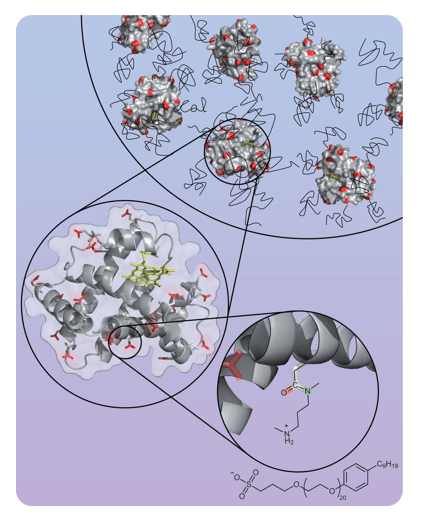Our Products Cannot Be Used As Medicines Directly For Personal Use.


Welcome! For price inquiries, please feel free to contact us through the form on the left side. We will get back to you as soon as possible.
Creative Enzymes has developed a series of services for all types of enzyme modifications. One of our highlighted services is chemical modifications of enzymes. The proper approaches and efficient operations guarantee extraordinary stability and catalytic efficiency. Creative Enzymes delivers excellent custom service for enzyme modifications using chemical approaches.

| Service | ||
| Enzyme Chemical Modification | Site analysis and method establishment | Get a quote |
| Chemical modification | ||
| Kinase analysis and sequencing | ||
| Function evaluation and specificity detection |
Q1: What’s the advantage of chemical modification in enzyme structure study?
For decades, researchers have tried to develop more practical methods, and chemical modification is an important probe that has been used widely to study the enzyme structures. In chemical modification, a reagent is placed in contact with the enzyme and binds covalently to amino acid side-chains in the enzyme, which will produce changes in some measurable property (or properties) of the enzyme. This covalent derivatization is then correlated to the enzyme property under consideration, so that a function can be suggested for the modified residue. This technique can be utilized for identification of those individual amino acid residues responsible for the catalytic properties of the entire protein. Therefore, the method is also considerably important to stabilize the enzyme, through modifications to the key amino acids that determine the structure or function of the enzyme. In other cases, the surface of the enzyme could also be covalently linked to oligomers and polymers that may improve the stability, biodistribusion, and compatibility with the end-use environment. The chemical modification of enzymes has played and will continue playing an important role in probing enzymatic mechanisms and stabilizing enzymes.
 Figure: Chemical modification of myoglobin. Carboxylate groups on the side chains of myoglobin are reacted with a diamine to introduce positive charges on to its surface.
Figure: Chemical modification of myoglobin. Carboxylate groups on the side chains of myoglobin are reacted with a diamine to introduce positive charges on to its surface.
Reference: Douglas S. Clark et al. Nature Chemistry. 2010 2: 607–608.
Being the specialist in enzyme industry, Creative Enzymes will maintain the effort to support your research activities. Please contact us for more details of chemical modifications of enzymes.